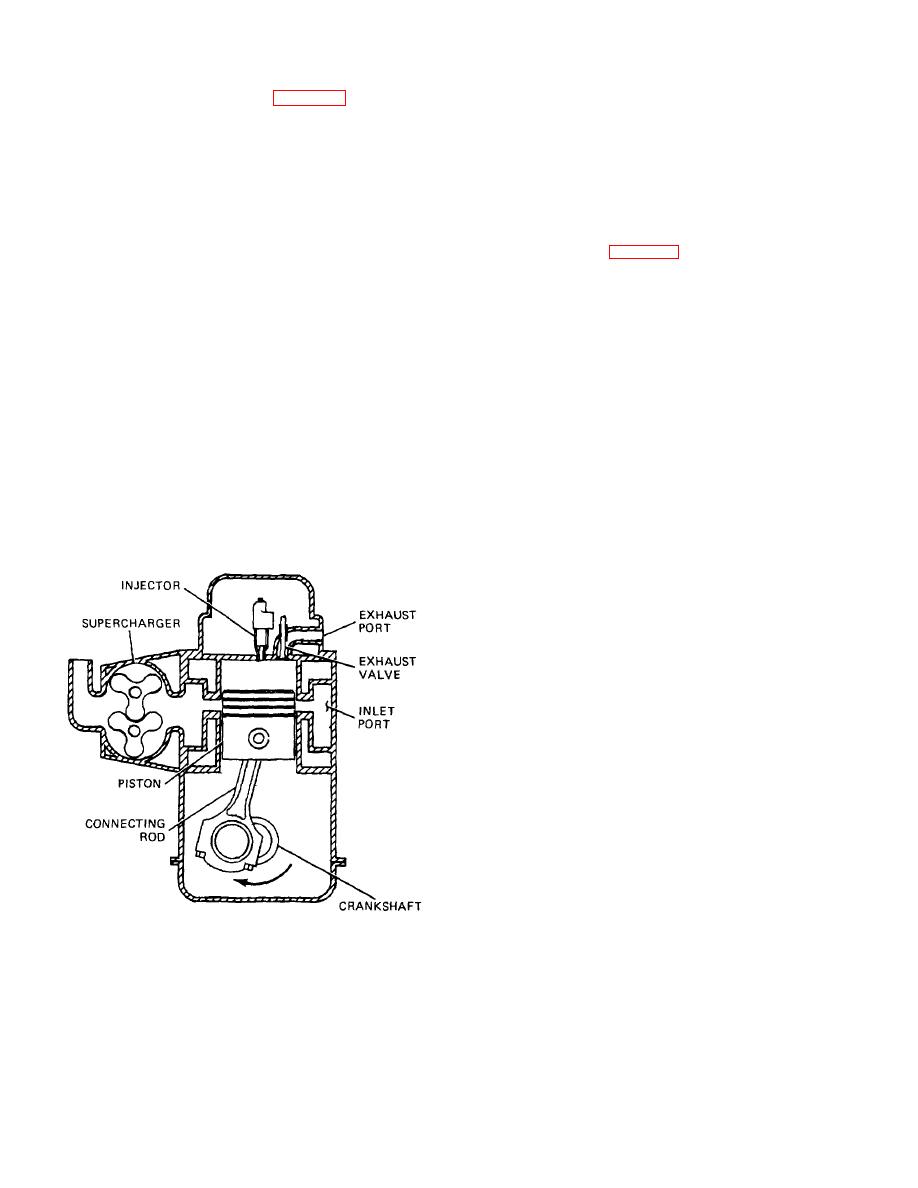
| Tweet |

Custom Search
|
|

|
||
 TM 9-8000
regulated by controlling the quantity of fuel injected into
2-14. Two-Stroke Cycle Diesel (Fig. 2-21).
the combustion chamber.
a. General. The two-stroke cycle diesel is a hybrid
(6) Unlike any of the other engine types, the
engine sharing operating principles of both a two-stroke
two-stroke cycle diesel engine must have a supercharger
cycle gasoline engine and a four-stroke cycle diesel
to force the intake air into the upper cylinder. The most
engine. The major features of the engine are as follows.
common type used is the rootes.
Principles of
supercharging are covered in chapter 4, section VI.
(1) It completes an operating cycle every two
piston strokes or every crankshaft revolution. Like a two-
b. Operation(Fig. 2-22).
stroke cycle gasoline engine, it gives a power stroke
every time the piston moves downward.
(1) Scavenging. Scavenging begins with the
piston at bottom dead center. The intake ports are
(2) It is a compression ignition engine, making
uncovered in the cylinder wall and the exhaust valve
it a true diesel engine.
opens. Air is forced into the upper cylinder by the
supercharger. As the air is forced in, the burnt gases
(3) It utilizes an exhaust valve on top of the
from the previous operating cycle are forced out.
combustion chamber as in a four-stroke cycle diesel
engine. Intake ports are cut into the cylinder wall as in a
(2) Compression. As the piston moves toward
two-stroke cycle gasoline engine.
top dead center, it covers the intake ports. The exhaust
valve closes at this point. This seals the upper cylinder.
(4) It mixes its fuel and air in the combustion
As the piston continues upward, the air in the cylinder is
chamber as in a four-stroke cycle diesel engine. The air
tightly compressed. As in the four-stroke cycle diesel, a
enters through the intake ports and the fuel is injected
tremendous amount of heat is generated by the
into the combustion chamber by the fuel injection system.
compression.
(5) The air supply to the engine is constant
(3) Power. As the piston reaches top dead
while the speed and power output of the engine is
center, the compression stroke ends. Fuel is injected at
this point. The intense heat of compression causes the
fuel to ignite. The burning fuel pushes the piston down,
giving power to the crankshaft. The power stroke ends
when the piston gets down to the point where the intake
ports are uncovered. At about this point, the exhaust
valve opens and scavenging begins again.
c. Advantages. The two-stroke cycle diesel engine
has all of the advantages that a four-stroke cycle engine
has over a gasoline engine plus the following:
(1) Because it is a two-stroke cycle engine, it
will run smoother than its four-stroke cycle counterpart.
This is because there is a power stroke generated for
every crankshaft revolution.
(2) The two-stroke cycle diesel has a less
complicated valve train because it does not use intake
valves.
Figure 2-21. The Two Stroke Cycle
Diesel Engine
TA233323
2-15
|
||
 |
||